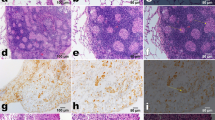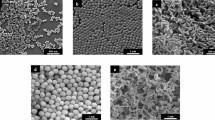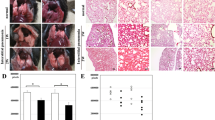Abstract
FINELY divided silica produces fibrotic lesions when it is inhaled or injected into the lung. The mechanism by which silica exerts its pathogenic effects has not been established but it is probable either that it functions by absorbing some cell constituent onto surface silanol groups or that, after particles have been ingested by phagocytes, monosilicic acid which is produced when silica dissolves in the cytoplasm exerts the cytotoxic action. In either case silanol groups are involved.
This is a preview of subscription content, access via your institution
Access options
Subscribe to this journal
Receive 51 print issues and online access
$199.00 per year
only $3.90 per issue
Buy this article
- Purchase on Springer Link
- Instant access to full article PDF
Prices may be subject to local taxes which are calculated during checkout
Similar content being viewed by others
References
Schlipköter, H. W., Ministerprasident des Landes Nordrhein-Westfalen Landesamt für Forschung. Jahrbuch 1964, 451.
Holt, P. F., and Nasrallah, E. T., Nature, 211, 878 (1966).
Nash, J., Allison, A. C., and Harington, J. S., 210, 259 (1966).
Ikekawa, N., and Yoshiro, S., Pharmacol. Bull. Japan, 2, 400 (1954).
Schlipköter, H. W., and Brockhaus, A., Fortschritte der Staublungen- forschungen, 377 (1963).
Author information
Authors and Affiliations
Rights and permissions
About this article
Cite this article
HOLT, P., LINDSAY, H. & NASRALLAH, E. Interaction of some Polyvinylpyridine Oxides with Polysilicic Acid and its relationship to their Ability to inhibit Silica Fibrosis. Nature 216, 611–612 (1967). https://doi.org/10.1038/216611a0
Received:
Published:
Issue Date:
DOI: https://doi.org/10.1038/216611a0
This article is cited by
-
Comment on the X-ray event of July 7, 1966
Solar Physics (1969)
Comments
By submitting a comment you agree to abide by our Terms and Community Guidelines. If you find something abusive or that does not comply with our terms or guidelines please flag it as inappropriate.



